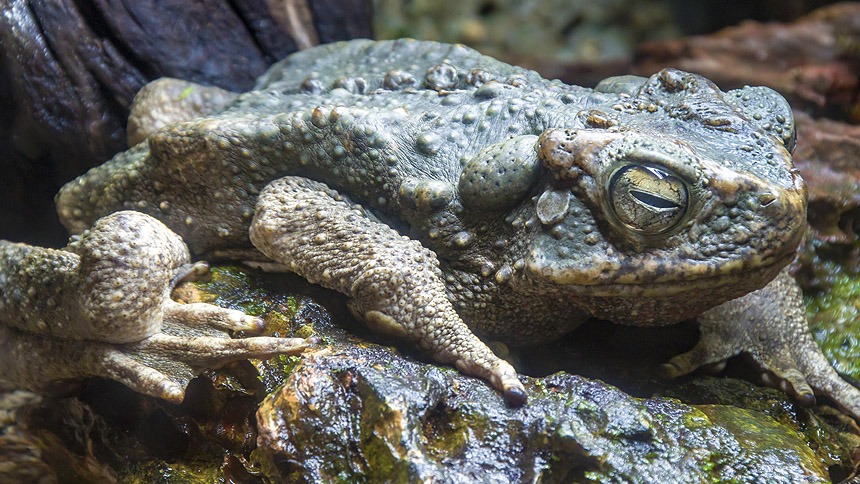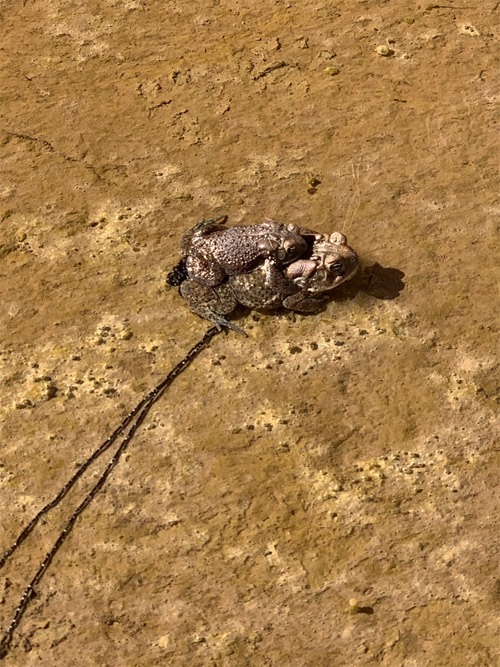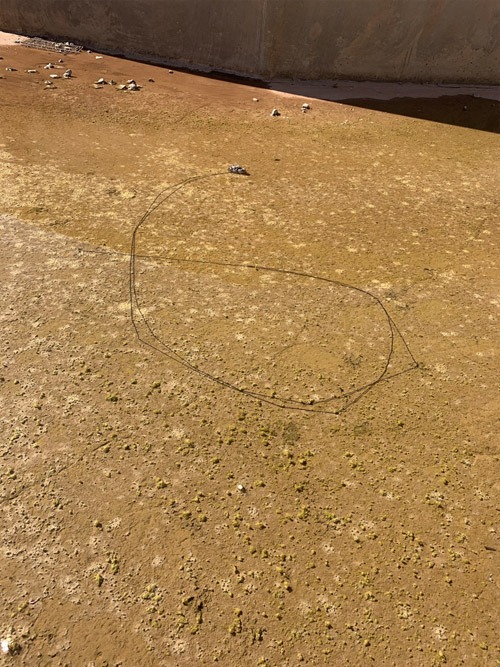
FAQs & Myths: Toad Edition
There are a number of myths regarding toads. Some of these legends hold merit while others are far from the truth. These misconceptions have been around for centuries. Whether the stories are told to keep children away from (potentially) harmful toads or completely made up, no one knows.
Regardless, my goal here is to answer some frequently asked questions about toads and dispel some of the myths and misconceptions.
First, let’s learn about toads. What exactly is a toad? Well, a toad is a member of the amphibia class in scientific classification. They’re within the Anura order. Anura is what most people call frogs. You see, Anura (means “without tail” in Ancient Greek) contains both true frogs and true toads. A “true toad” is a member of the Bufonidae family.
Toads are similar in appearance to frogs but they have small differences. Regardless, they’re both amphibians and they’re both within the Anura order.
Now that we’ve gone over some basic information, let’s get into the frequently asked questions, myths, and misconceptions.
Page Contents
Frequently Asked Questions About Toads
Everything under this heading will serve to answer questions. If you’re more interested in the myths and misconceptions, feel free to skip this section.
Can toads swim?
Yes, toads can swim. I like this question; it’s a good one. Here lies a difference between true toads and frogs. Both are dependent on water but toads can generally survive longer without it. Hence the reason you’re more likely to find a toad farther from a body of water than a frog.
To further answer the question, toads begin their lives as tadpoles in the water. Tadpoles, toadpoles, pollywogs, whatever you want to call them. As they metamorphose into toadlet they transition into terrestrial (land dwelling) creatures. They begin hopping on land.
As toadlets mature into adults and repeat the cycle, adult toads lay their eggs in water. They hop and swim into the water where they lay eggs. Sure, the water is often shallow streams or puddles, but you get the point; toads can swim.
As you can see in the video, this toad is mostly floating but eventually swims around.
How do toads mate?
During the springtime is when toads mate. Rain is more prevalent and warmer temperatures come. The number of insects increases, giving way to more feeding opportunities. The conditions are right and so begins the mating season.
Toads (and frogs) croak when they’re ready to mate. Once an adult male and female are together, ready to mate, they come together in a position called amplexus. In this position, the male is on top of the female and fertilization takes place outside the body.
The female toad lays eggs while the male fertilizes the eggs. Toad eggs are typically laid in a string (see the pictures below). There are tiny tadpoles inside the eggs. Over the next few days, those tadpoles will feed on the egg yolk and eventually come out into the water.
Those tadpoles metamorphose into toads, mature, and the cycle repeats. For more information, read about the life cycle of a frog.
Are toads poisonous?
Yes, toads are poisonous. Don’t worry too much, though. They’re not very harmful to humans. Poison is defined as a harmful substance that is absorbed or swallowed. Venom is a harmful substance that is injected by fangs, stingers, etc.
Toads produce a toxic substance, namely bufotoxin, which is secreted through parotoid glands behind their eyes. This toxin serves as a defense mechanism against other animals.
This toxin is mildly irritating to humans when coming in contact with your hands (depending on the species it comes from). It’s unlikely you’ll swallow it because, well, most people don’t go around eating toads.
If you get a white, milky substance on your hand after handling a toad; don’t panic. Go wash your hands with soap and water.
Bufotoxin and toads are mostly a concern to small animals like cats and dogs. For them, a toad hopping through the backyard looks like a fun toy. Should your pet happen to eat a toad, there could be problems! Not only will they be swallowing toxins but the toad might get stuck in their throat.
So the next time you see your cat or dog chasing a toad, I recommend keeping them away from it. Put your pet away and help the poor toad out of your backyard before letting them back out.
Where do toads go in the winter?
During the winter months, toads go into a state of brumation. Brumation is like hibernation but it’s used to describe a period of dormancy cold-blooded animals go through.
But where do they actually go? Most of them burrow into the ground. They go under logs, in the dirt, under leaves, etc. Different species have different adaptations for surviving cold weather.
Wood frogs are capable of freezing and thawing (read more). Their blood is thought to act like anti-freeze, giving them ability to survive harsh winters.
In short, toads mostly stay in the same areas, burrowed in the ground or under logs , brush, or leaves. They’ve adapted strategies for surviving the winter and those adaptations can differ from species to species.
Myths About Toads
I’ll do my best to uncover the origin of myths and misconception about toads in this section.
Do toads really give you warts?
You’ve probably heard this one yourself. I heard it when I was a kid. But is it true? Can toads really give you warts? The answer is no, toads cannot give you warts.
I conducted some research and ended up empty-handed; no one knows where this originated! The general consensus is, people most likely saw the warty-looking skin of a toad and thought by touching it, you could get warts.
Common warts are caused by a virus and they actually can be transmitted by touch, accord to the Mayo Clinic. However, the virus only transfers from human to human contact, not from toads (or frogs) to humans.
So feel free to handle toads without fear of getting warts. Just know that toads are mildly toxic and it’s believed they’re capable of carrying salmonella. Be sure to wash your hands with soap when you’re finished. Also, keep in mind that handling amphibians is very traumatizing for them. It’s best to leave them alone. See our post on proper frog handling etiquette for more information.



2 Comments
Thank you so very much! This is great info! You rock!
Thanks for the nice comment!